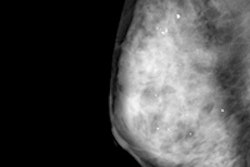Wednesday, December 2 | 3:30 p.m.-3:40 p.m. | SSM02-04 | Room E451B
This session will describe how shear-wave elastography with B-mode ultrasound can distinguish between ductal carcinoma in situ (DCIS) and invasive cancer, helping surgeons determine the proper extent of surgery.A team led by Dr. Jae Seok Bae of Seoul National University in South Korea investigated the diagnostic performance of color shear-wave elastography combined with B-mode ultrasound. The study included more than 1,500 patients with 1,621 lesions who underwent B-mode ultrasound and color shear-wave elastography before biopsy between January 2011 and December 2013.
Bae and colleagues recorded the size and BI-RADS assessment of each lesion, and they evaluated the sensitivity, specificity, positive predictive value, negative predictive value, and diagnostic accuracy of both modalities alone and then in combination. They found that adding shear-wave elastography to B-mode ultrasound improved some of the modality's performance metrics, such as specificity and positive predictive value.
Adding shear-wave elastography to B-mode ultrasound in various cutoff ranges boosts the specificity and positive predictive value of the modalities, which could decrease the false-positive rate for B-mode ultrasound alone and help surgeons more accurately plan treatment, the group concluded.




















